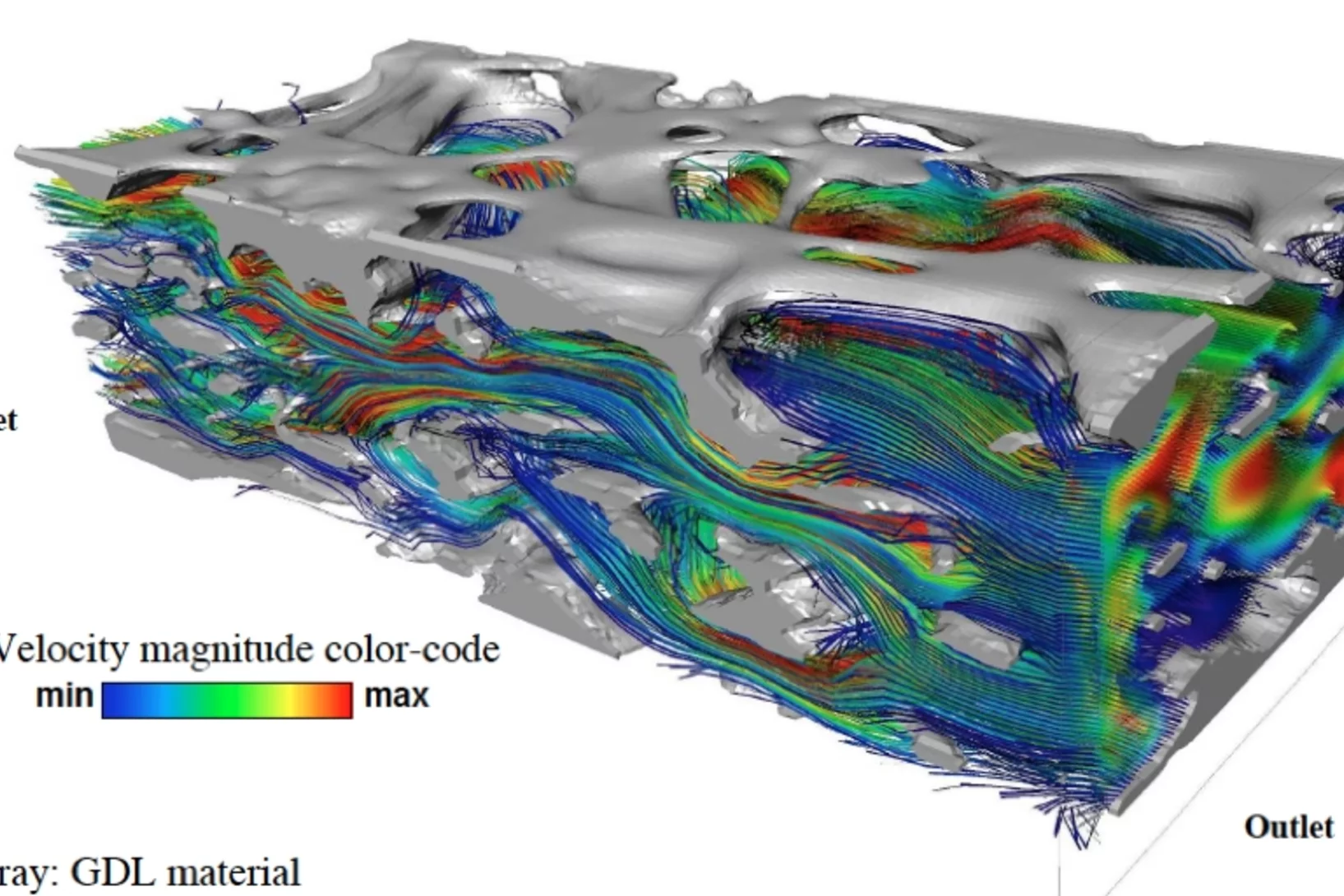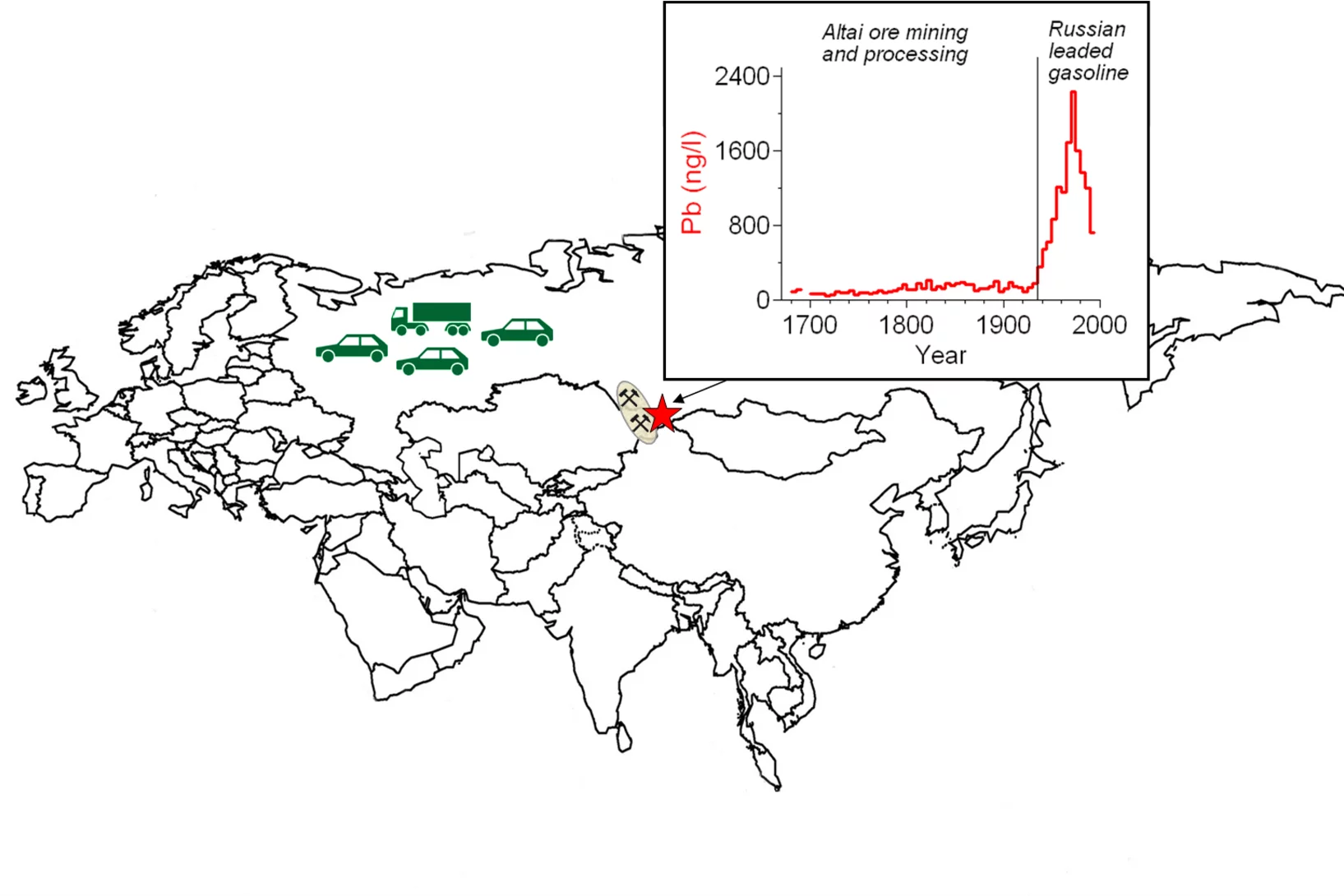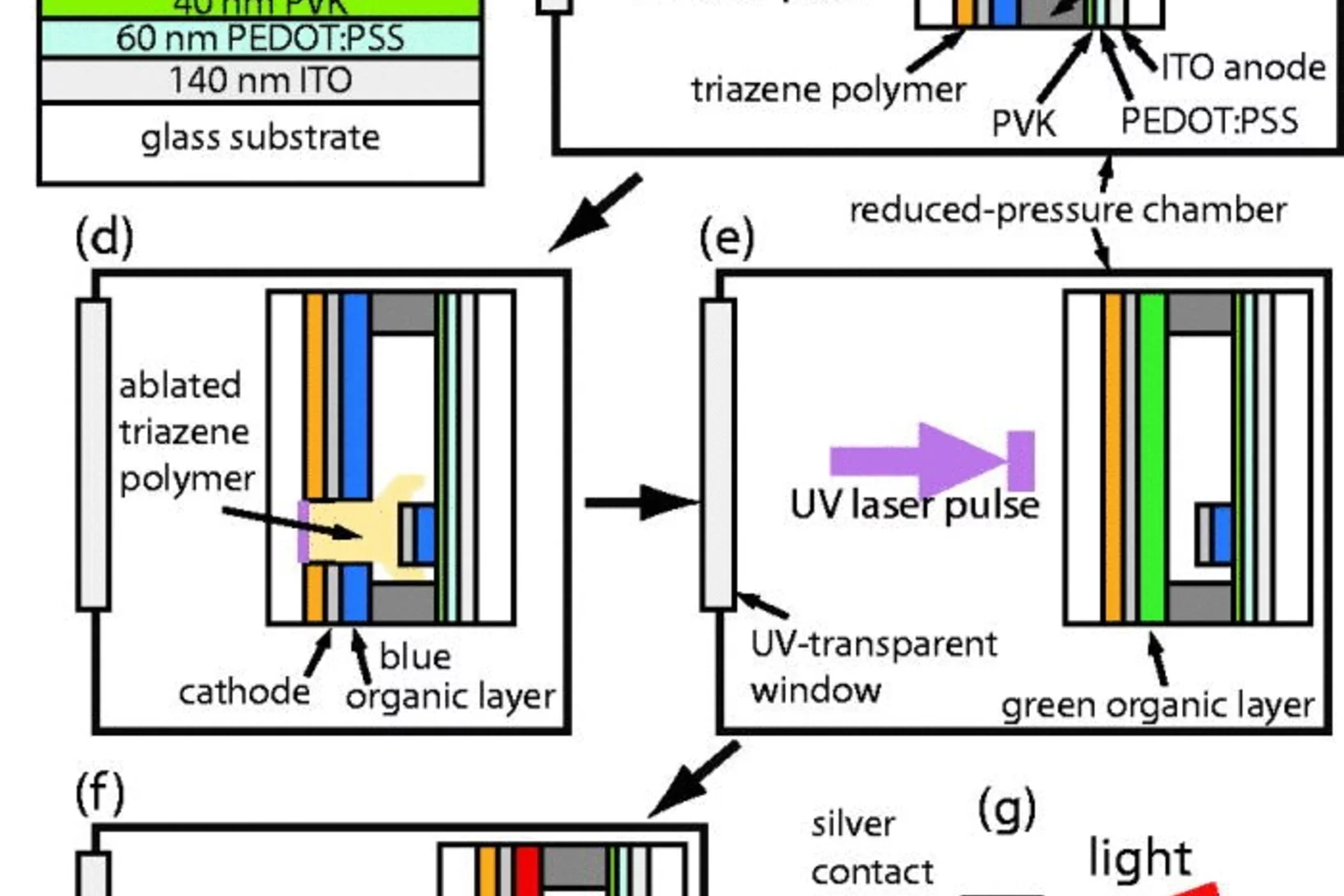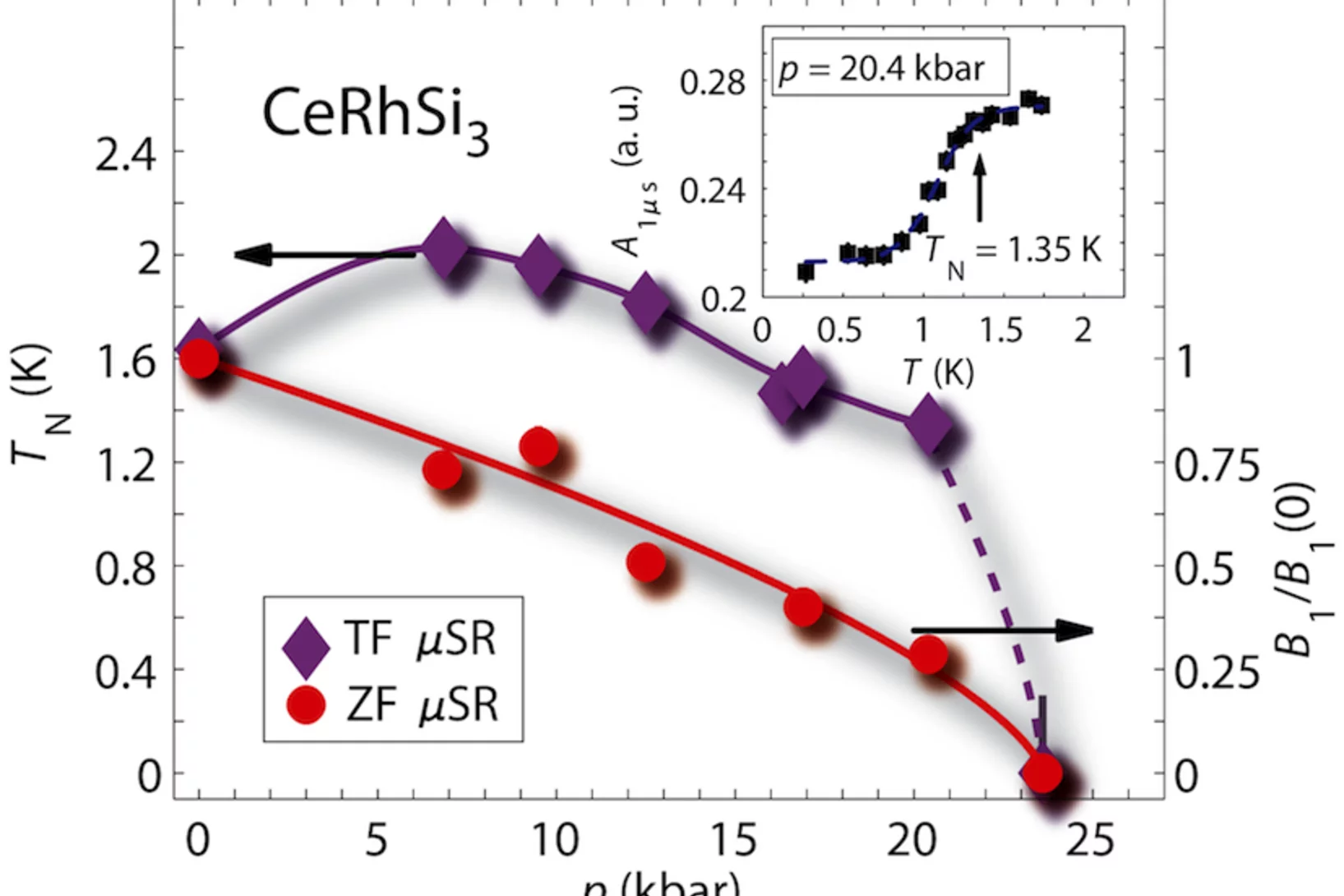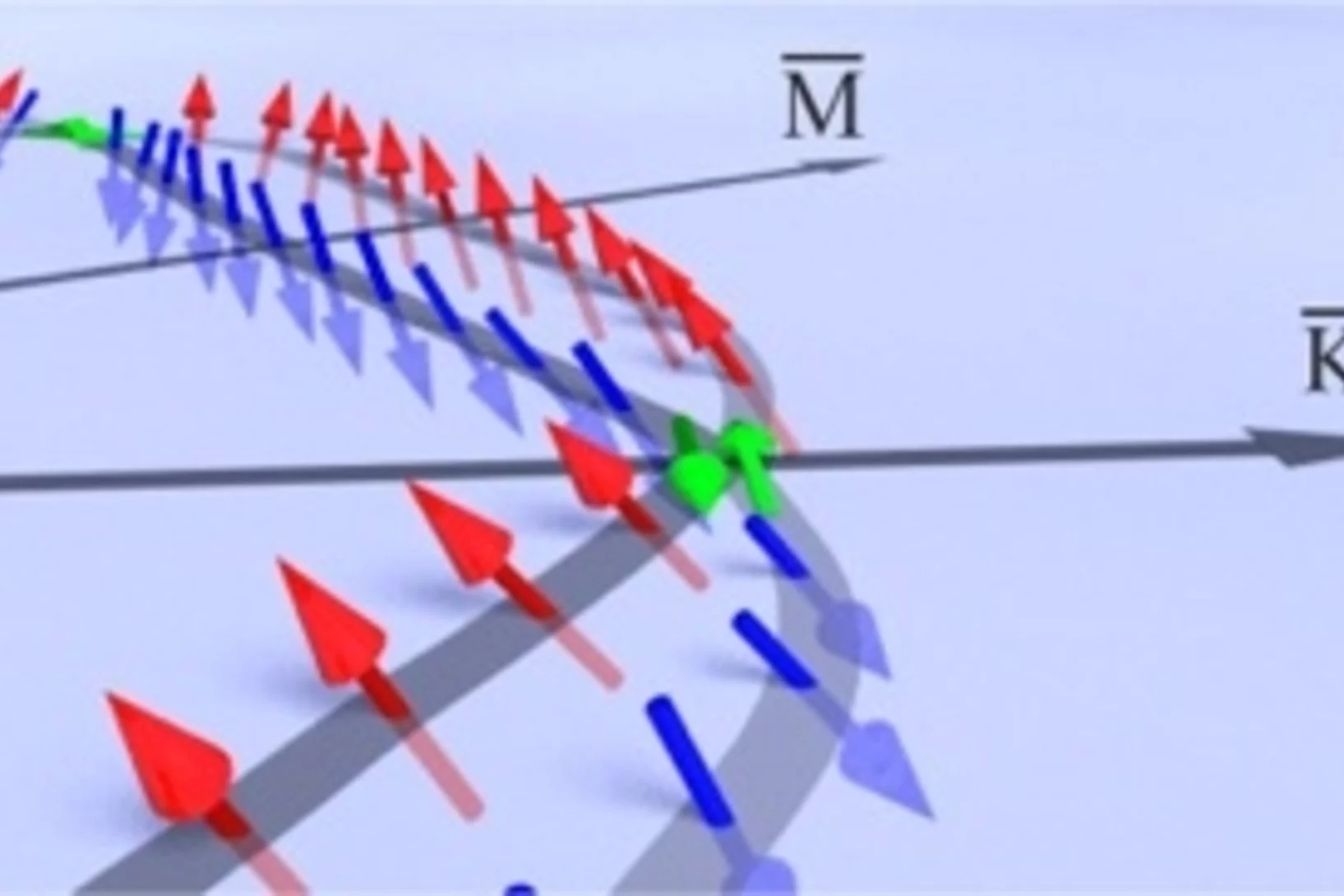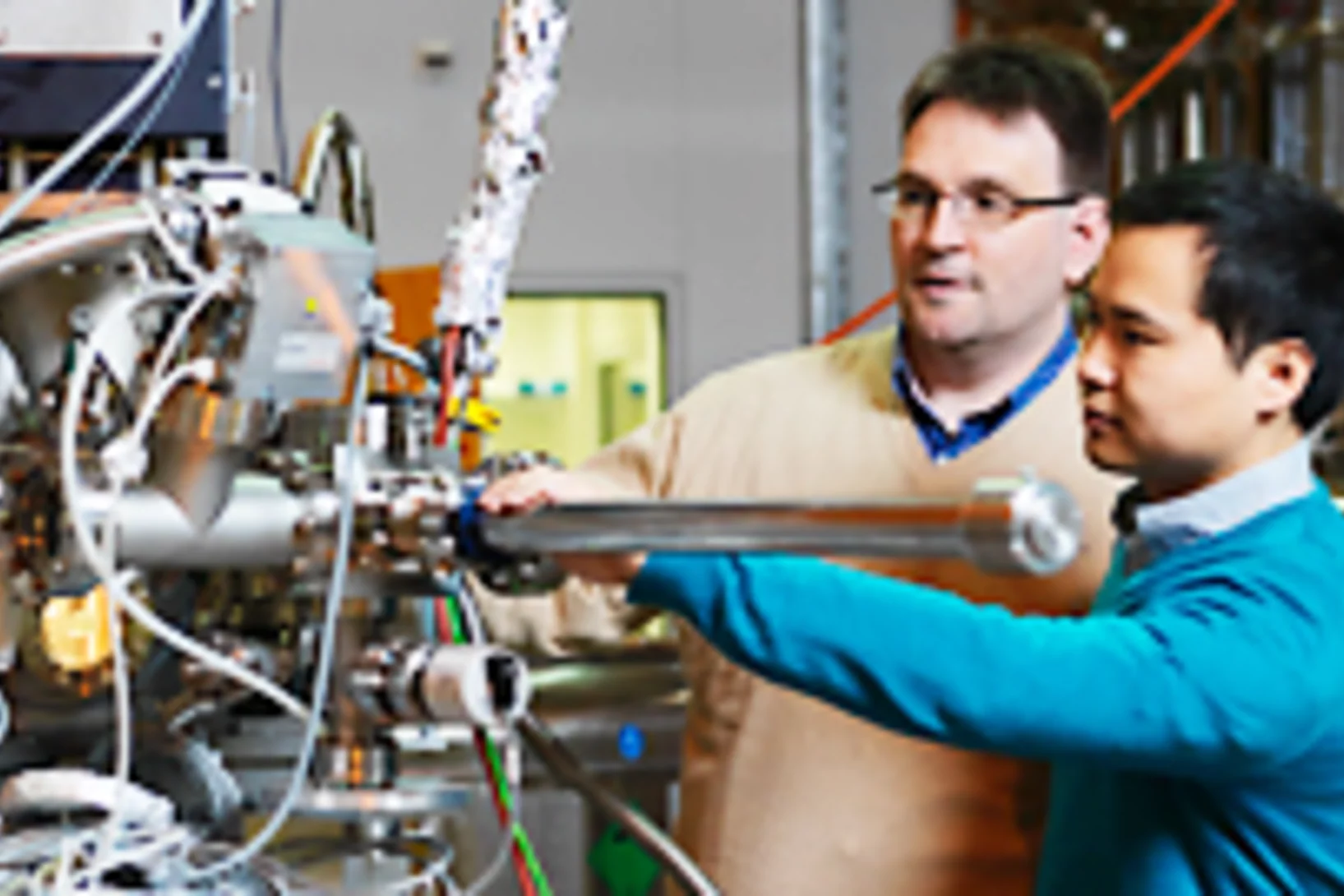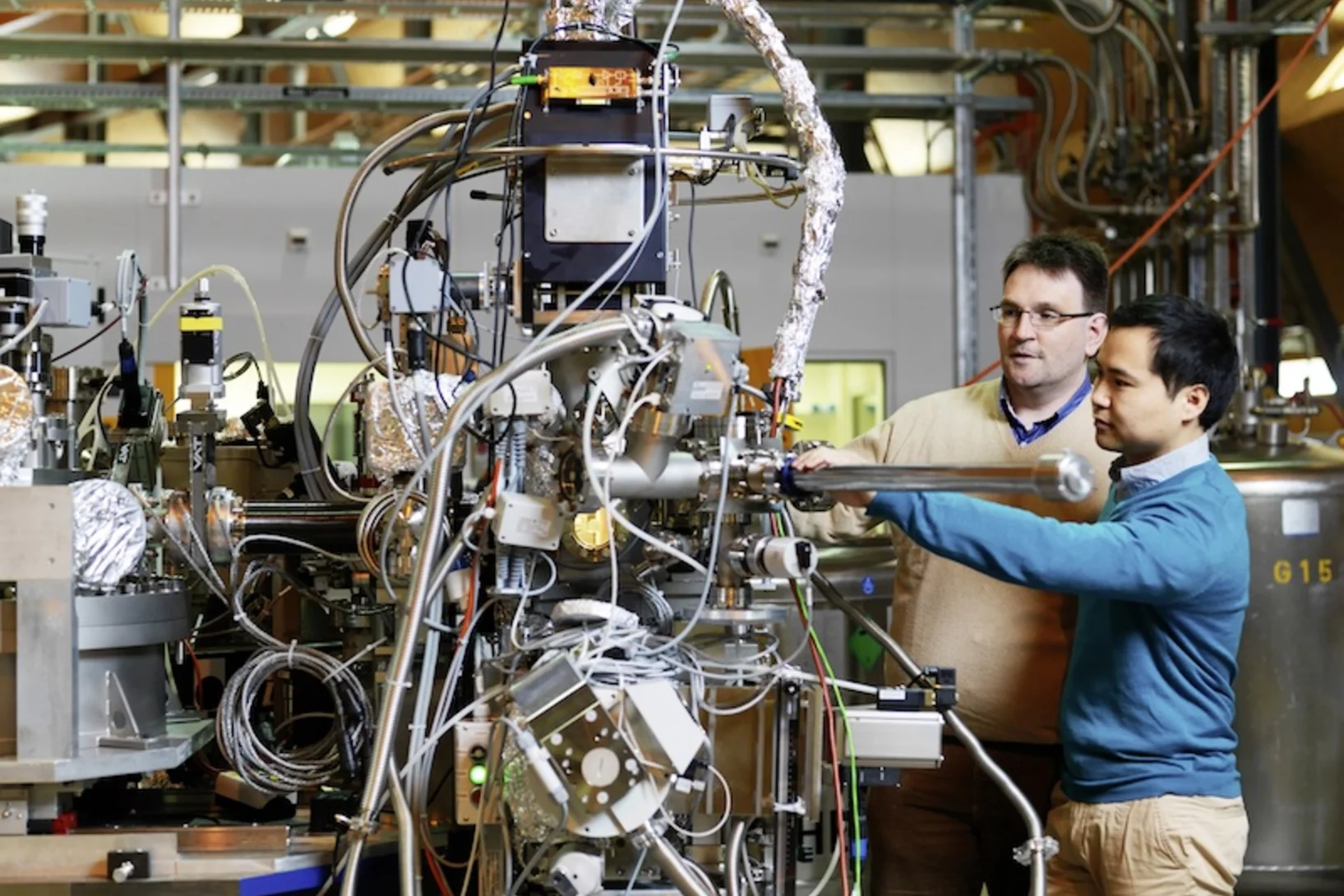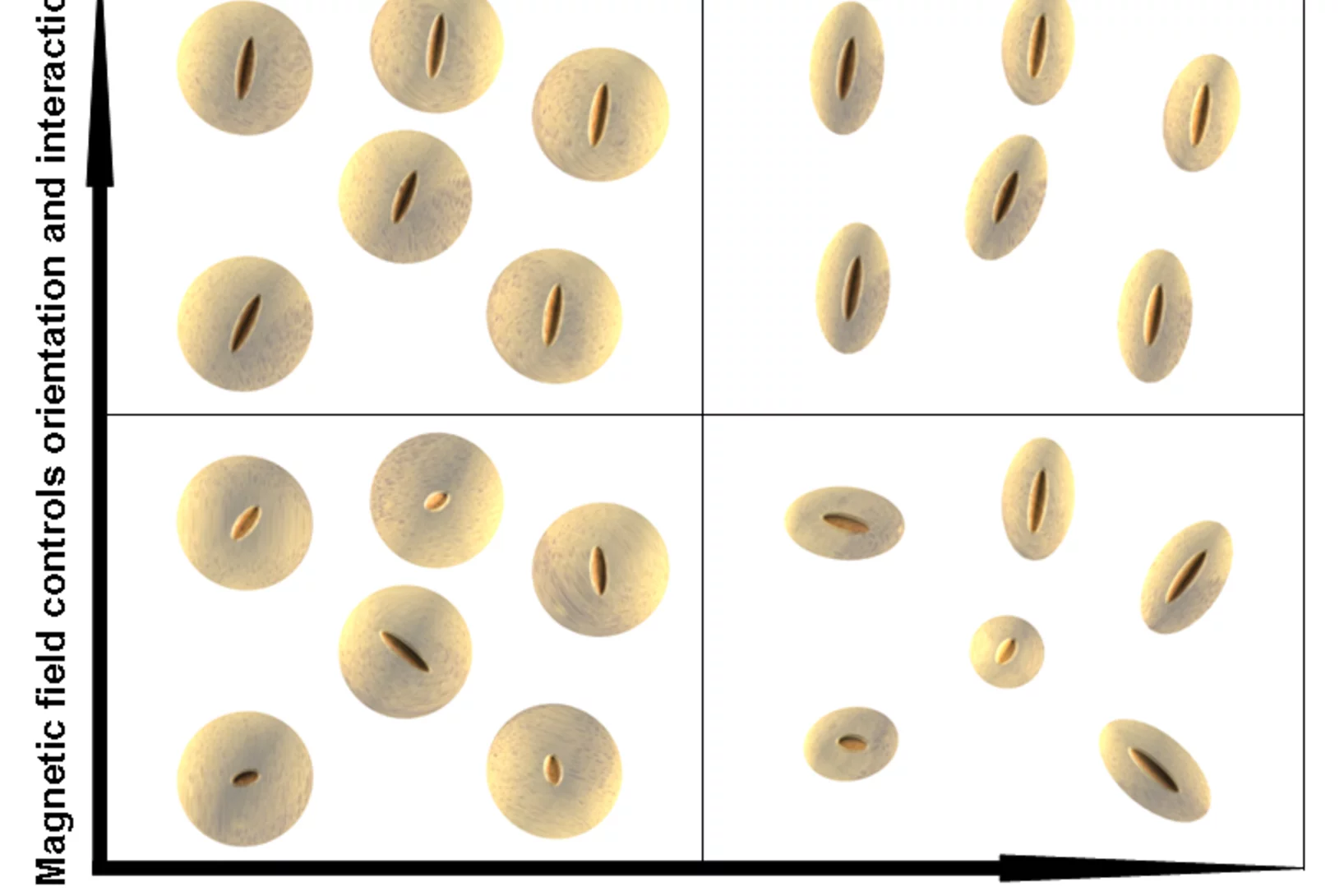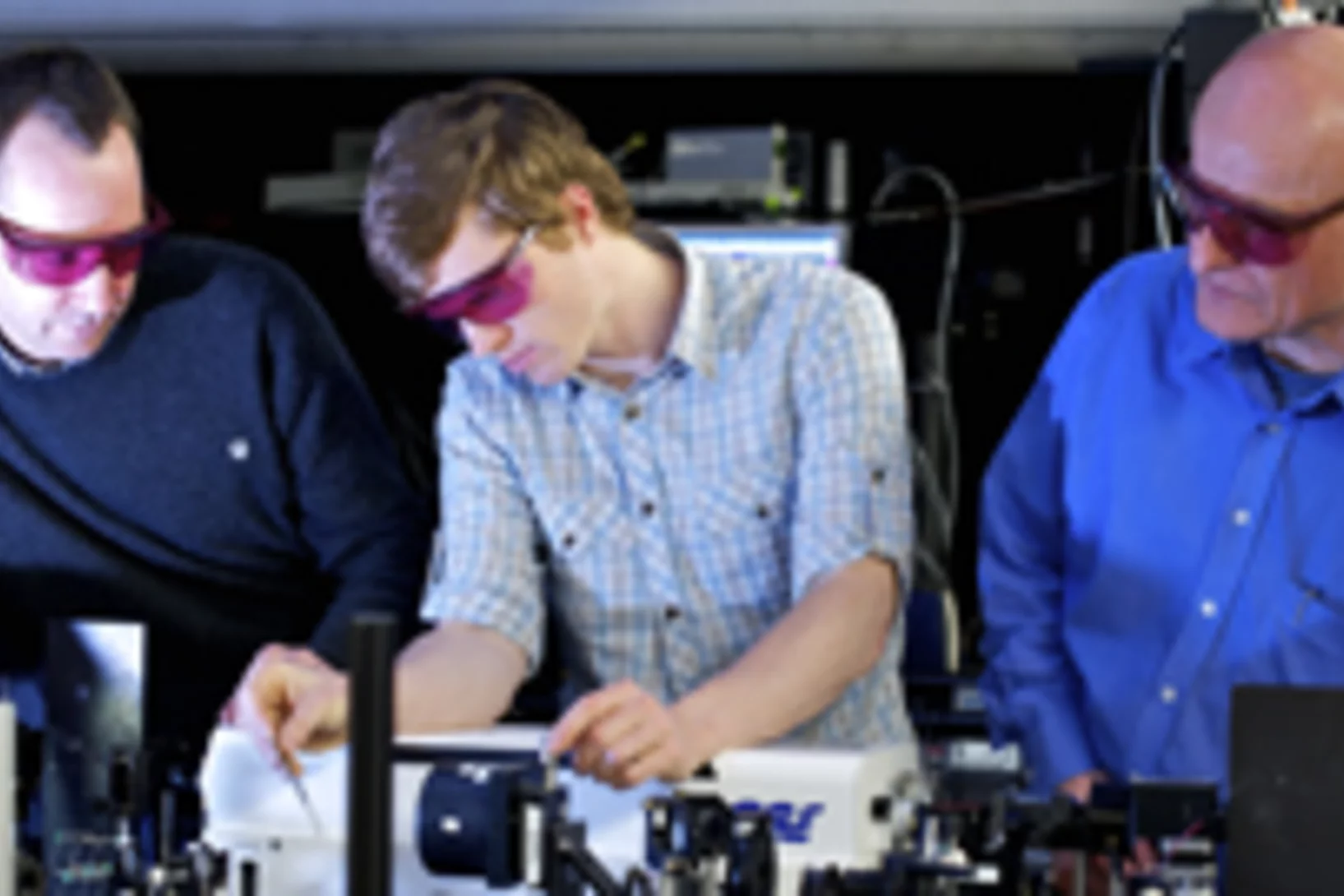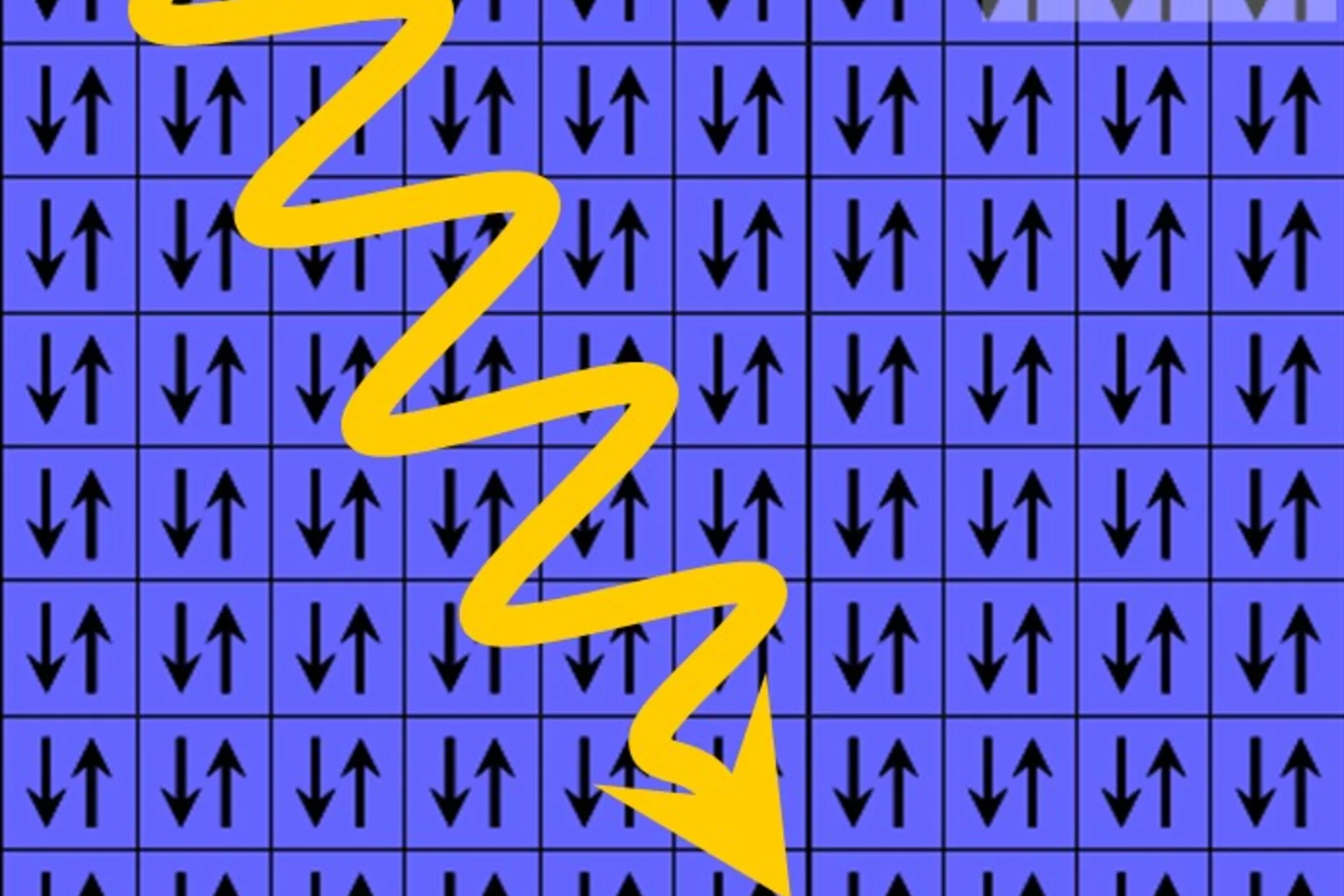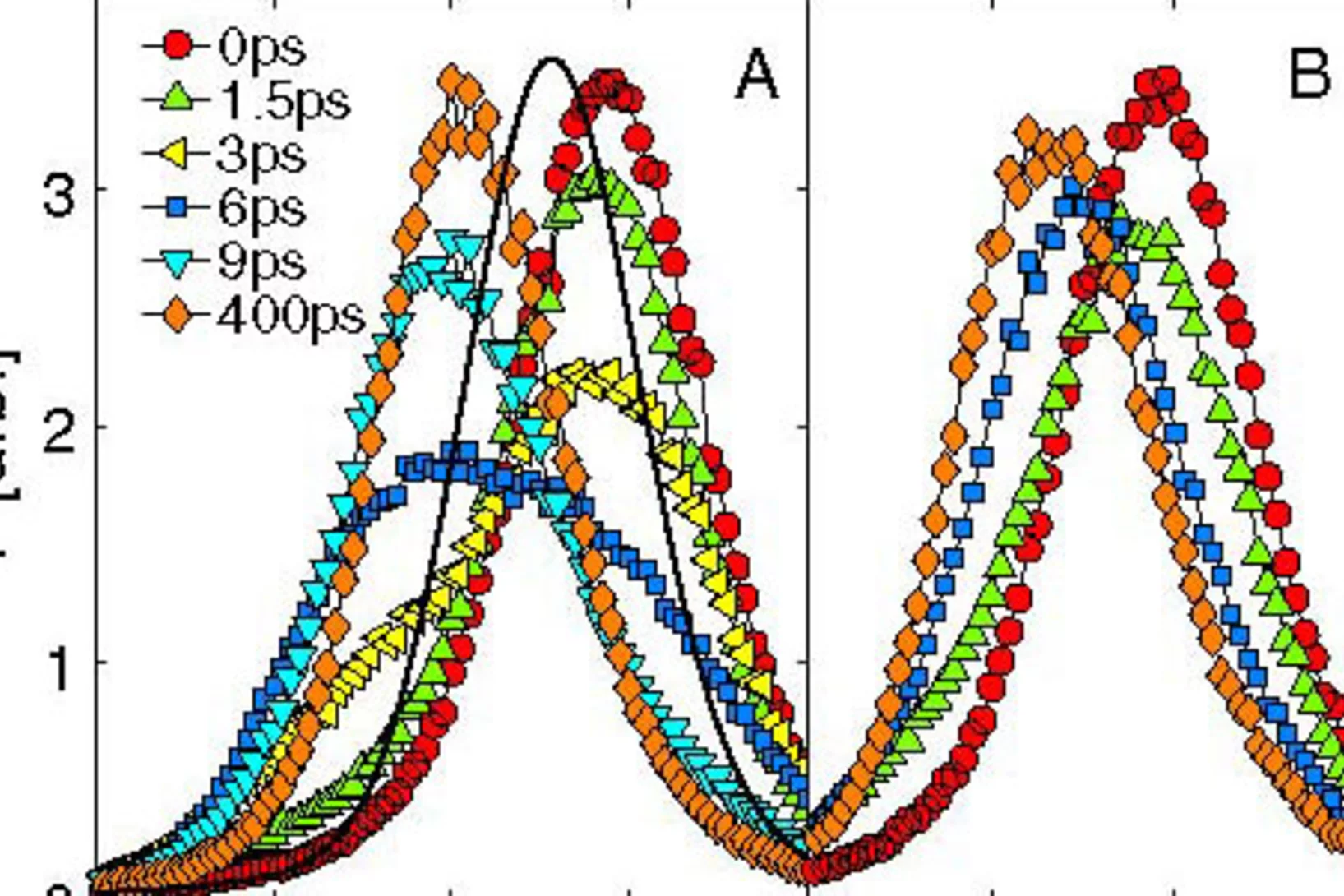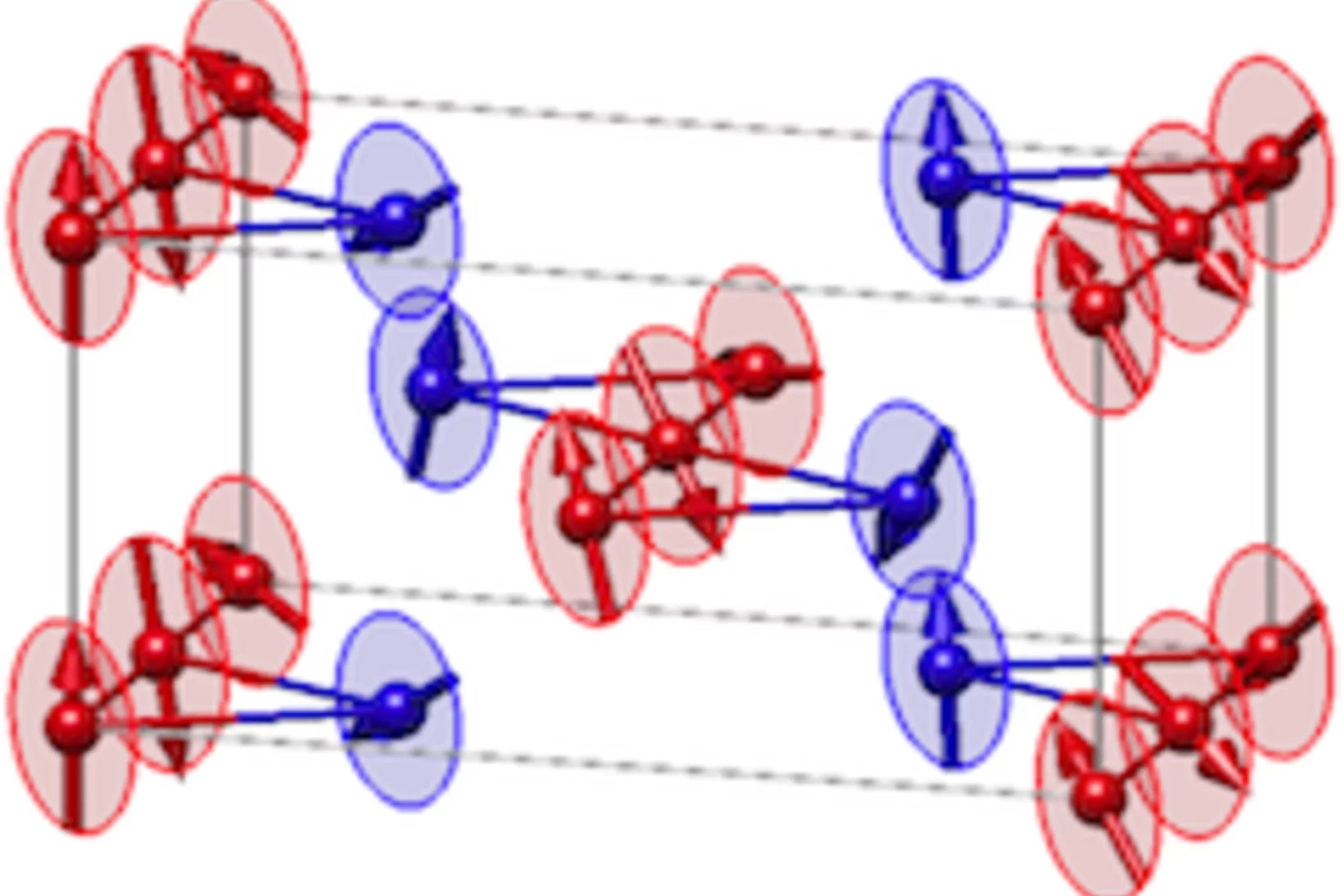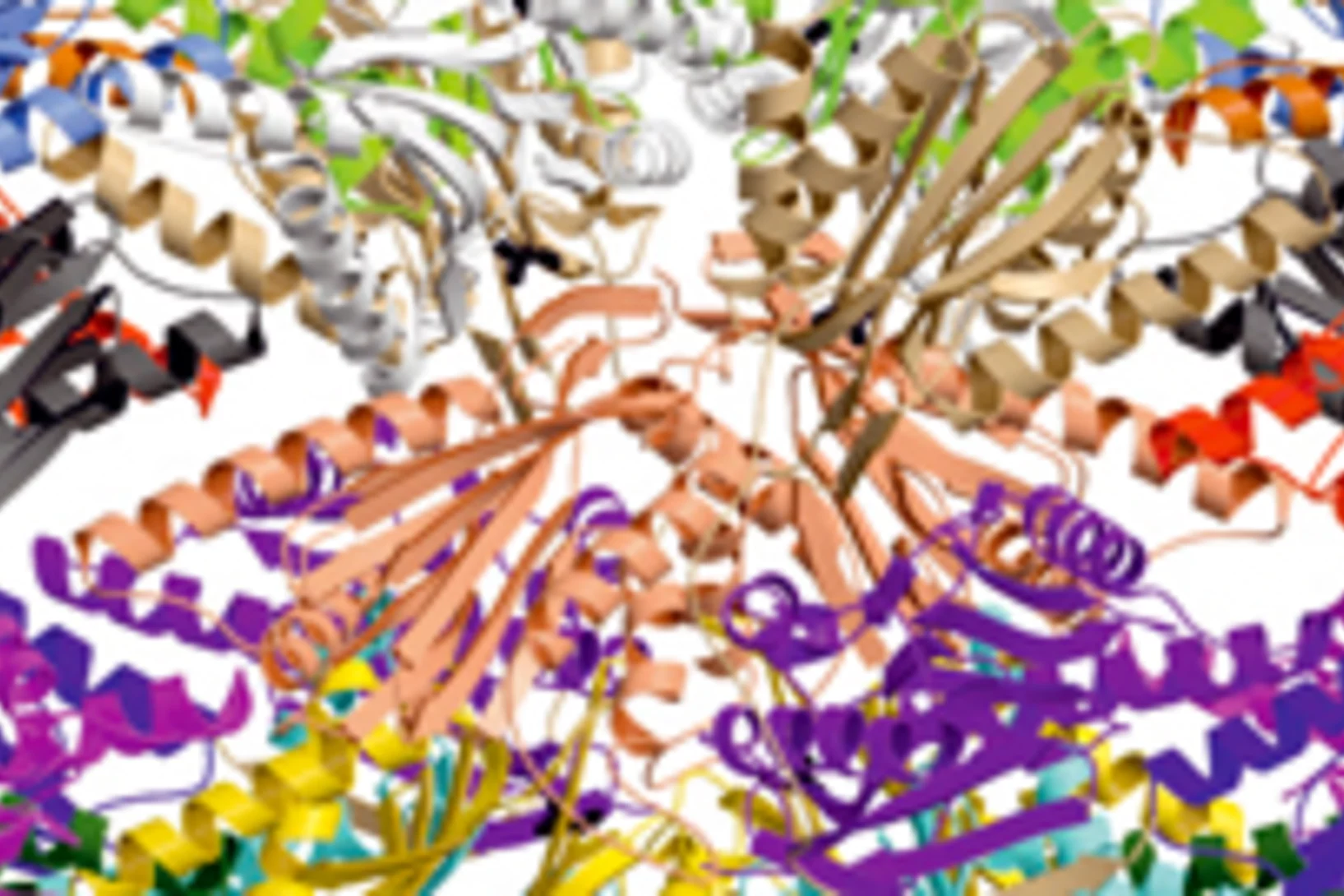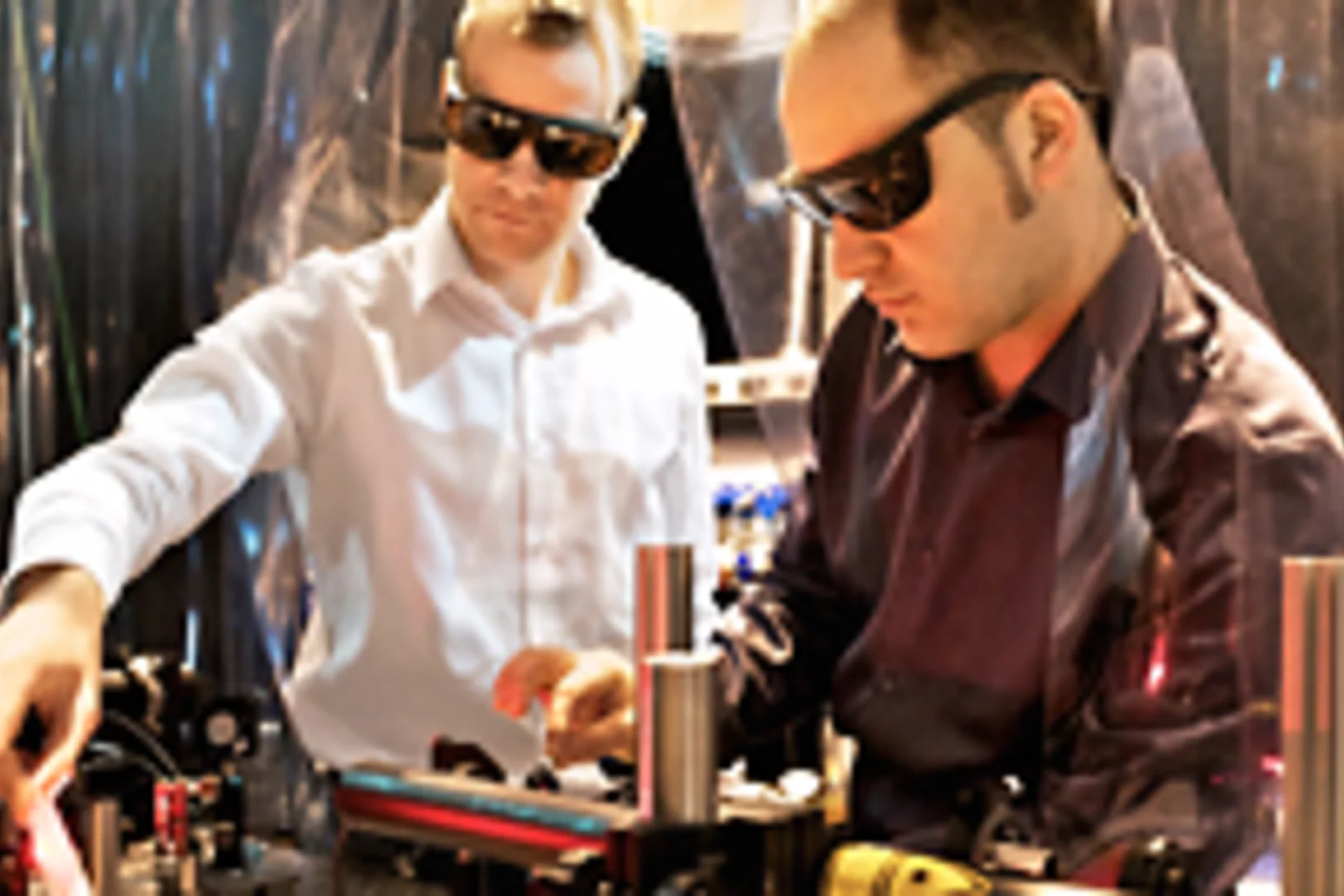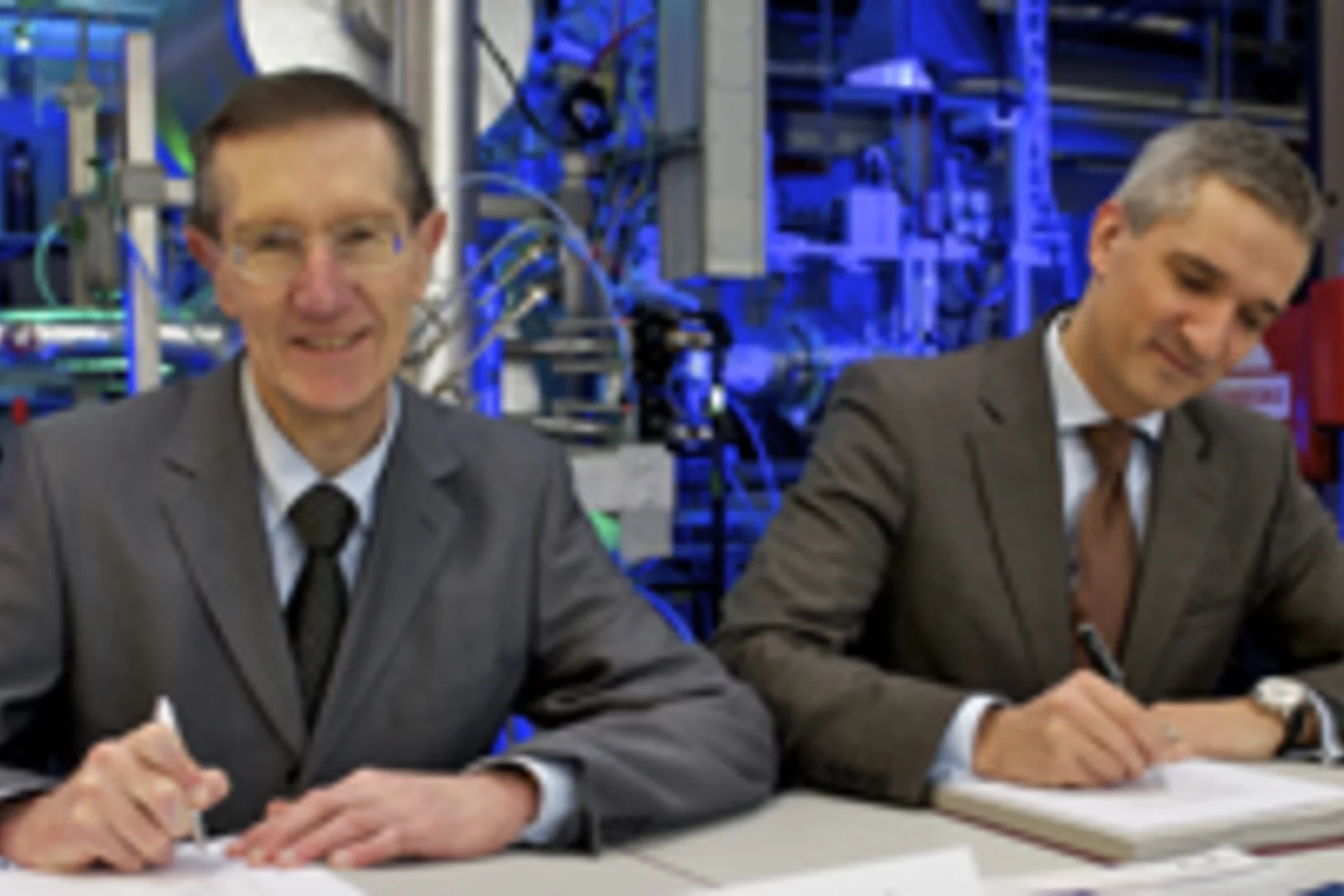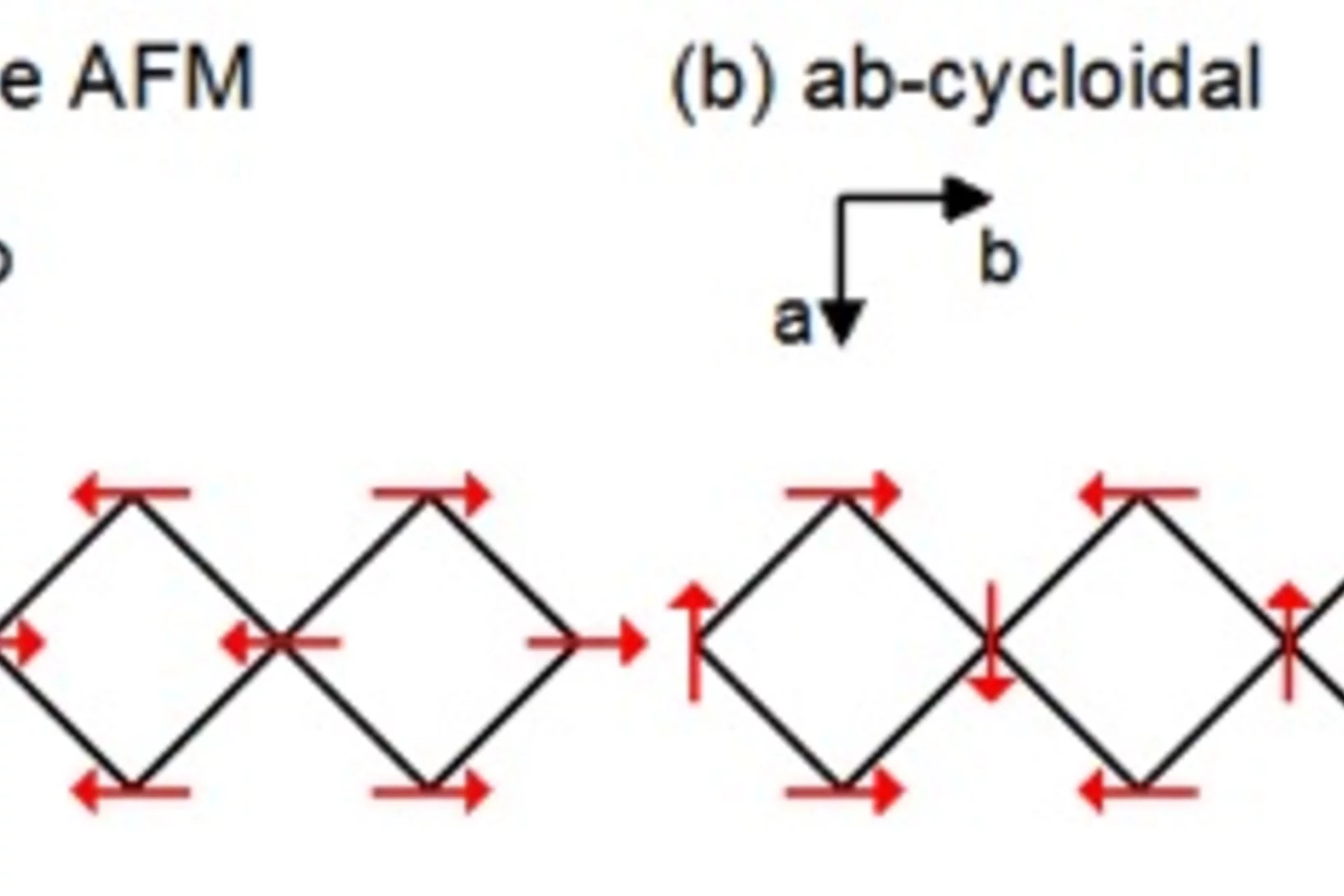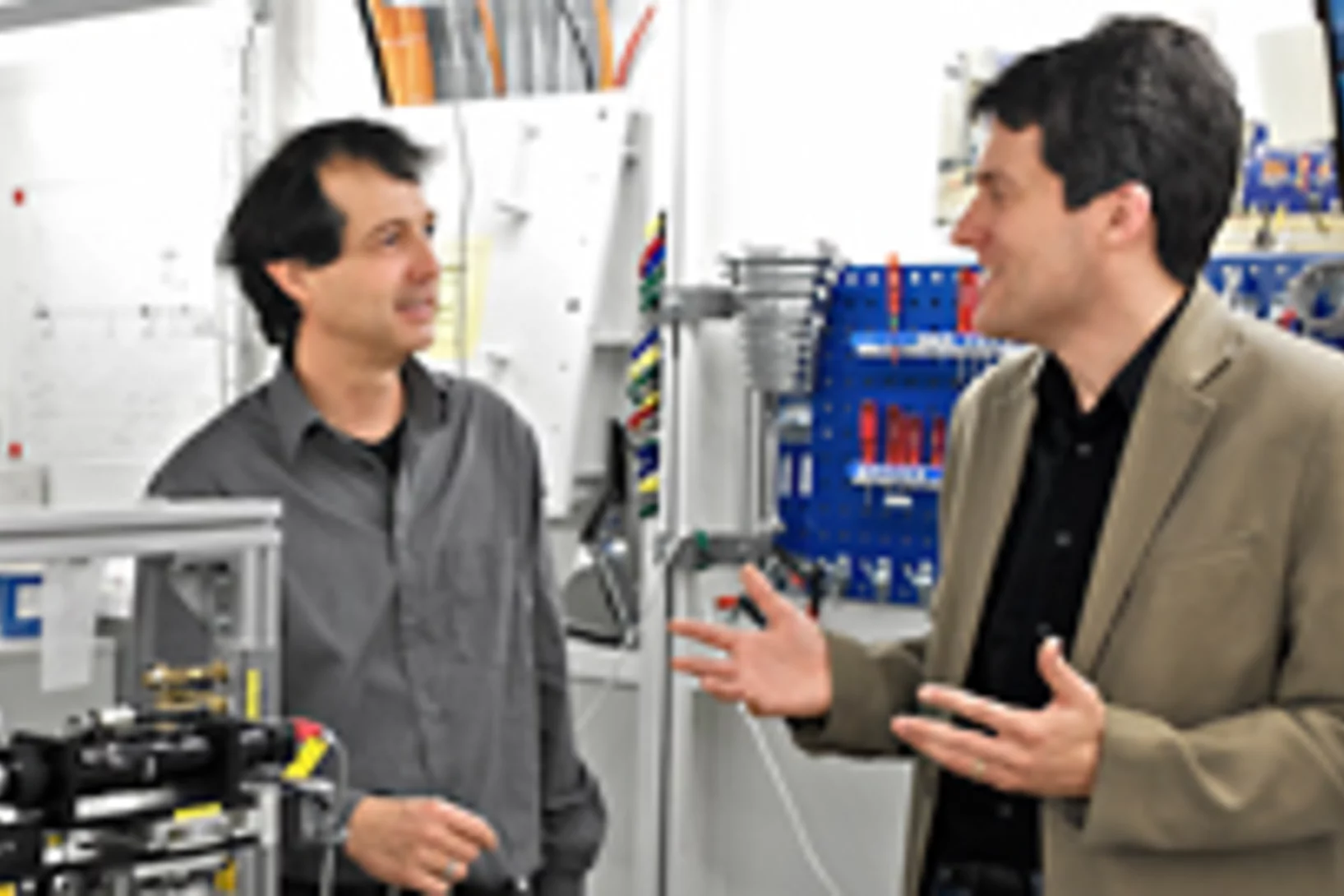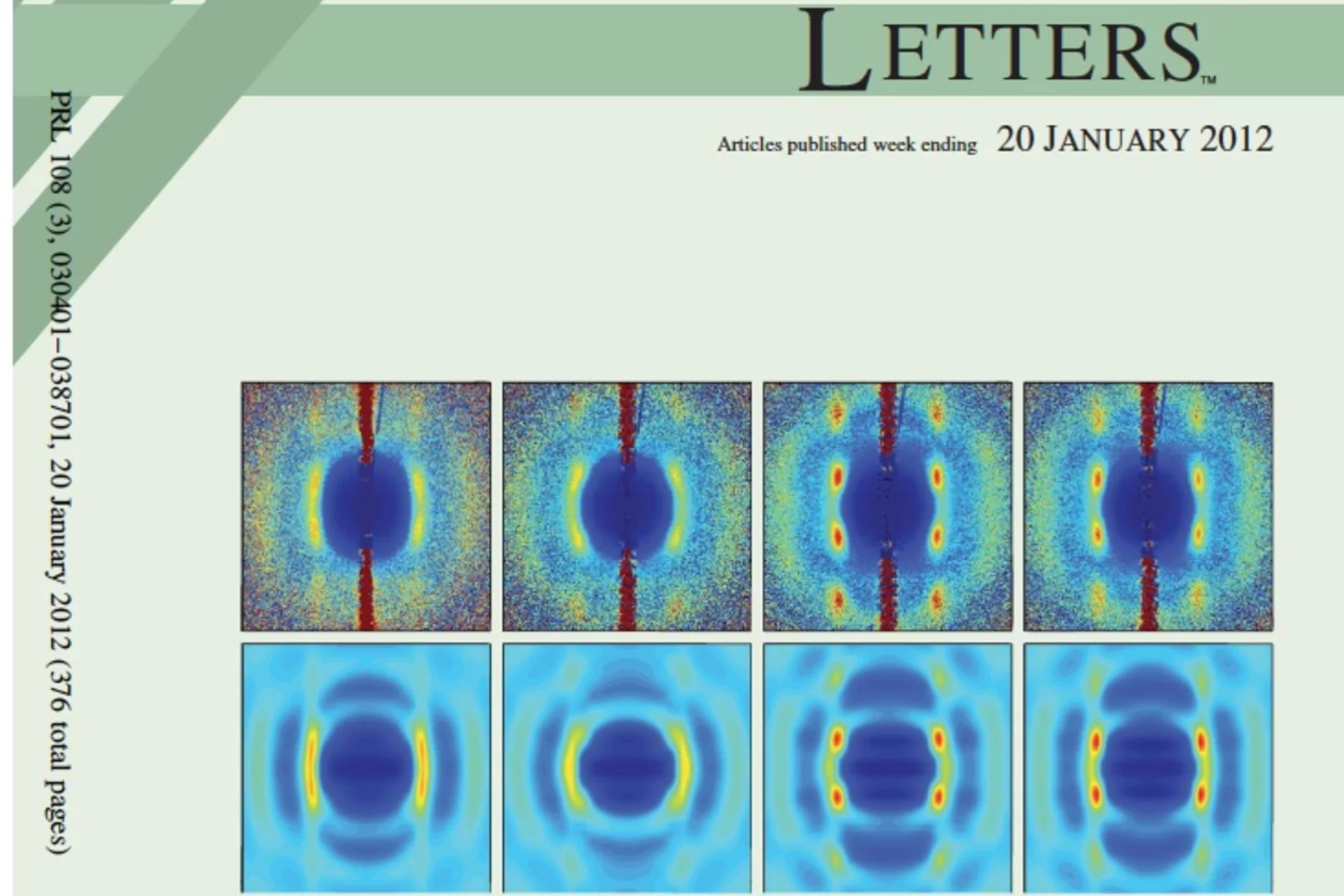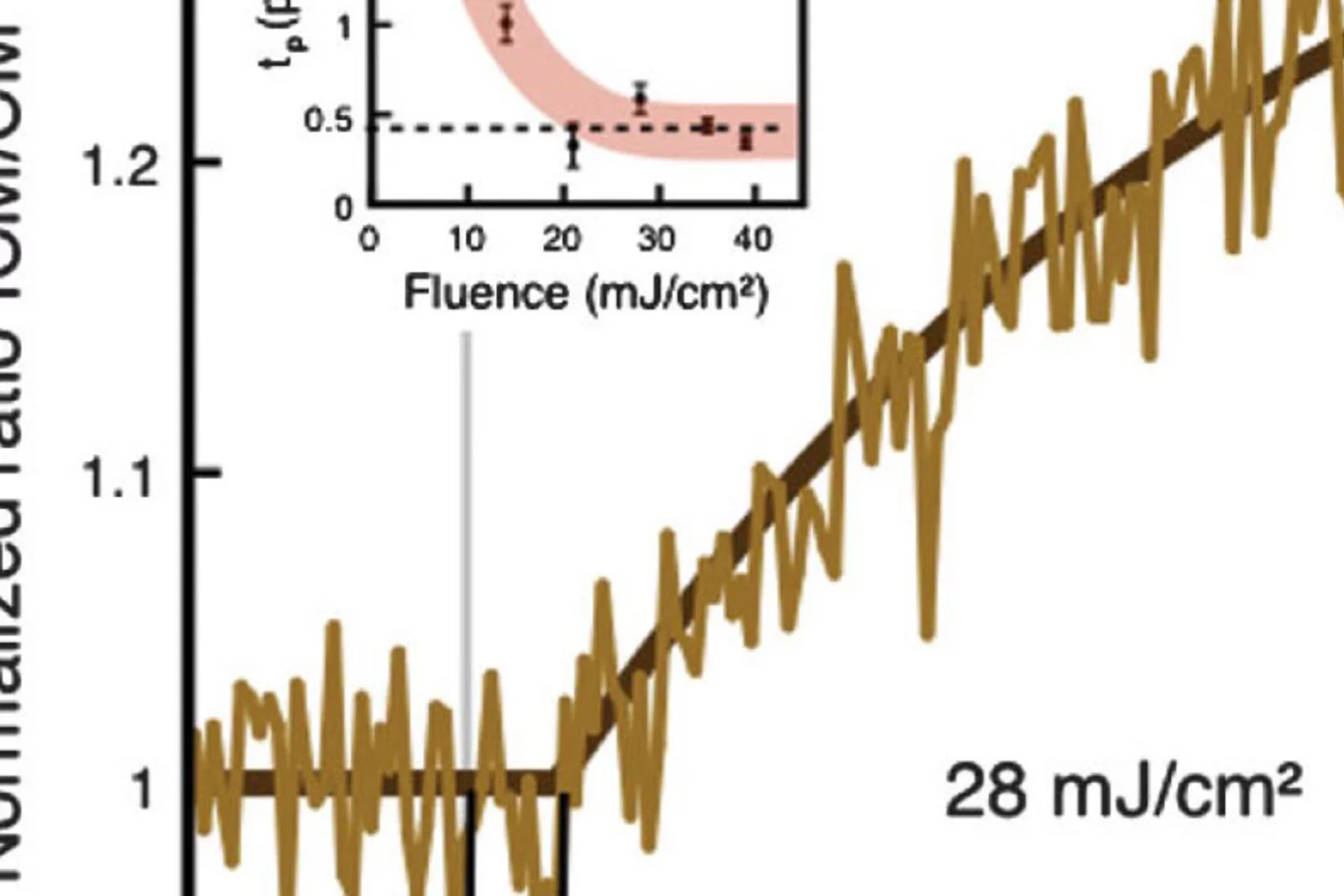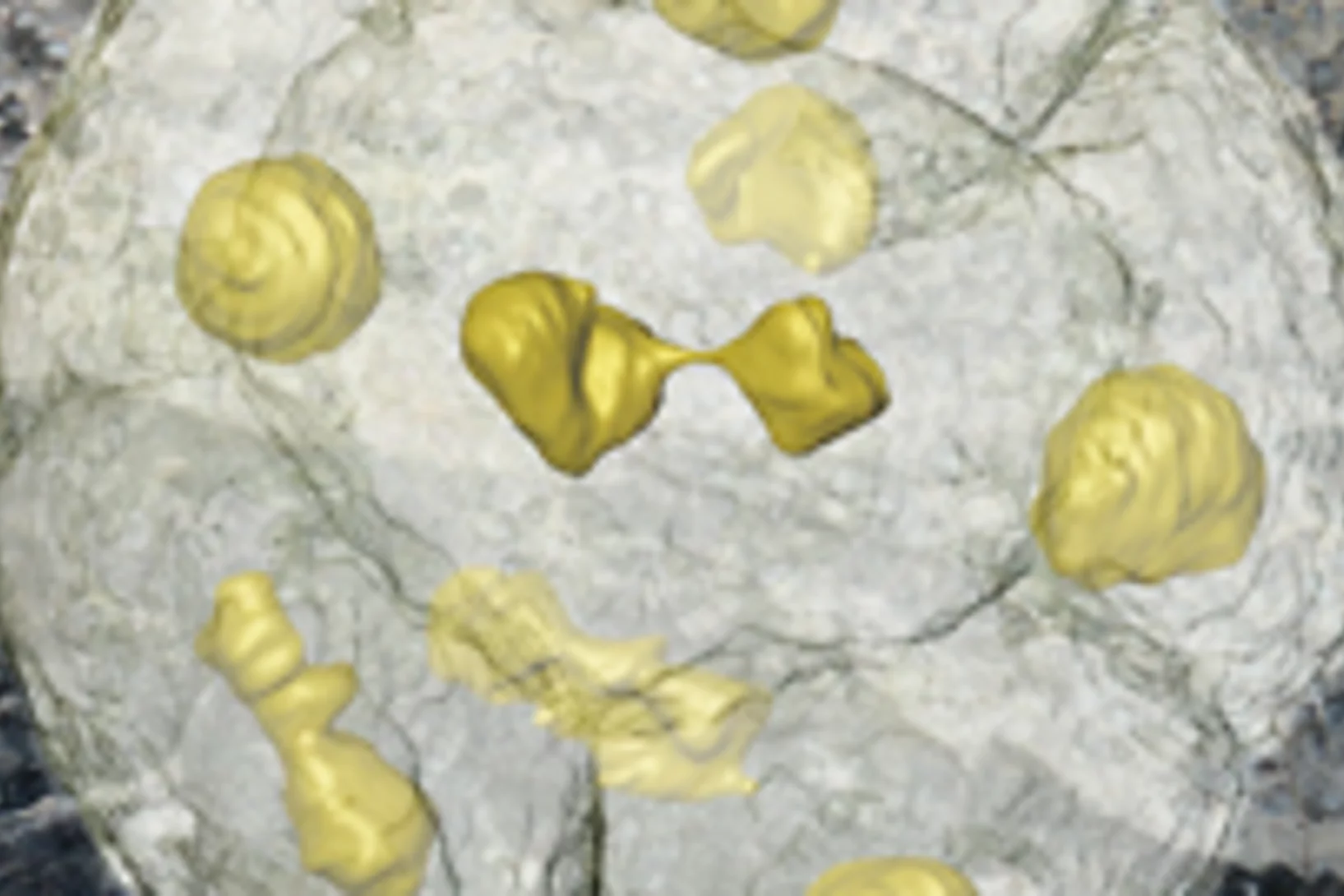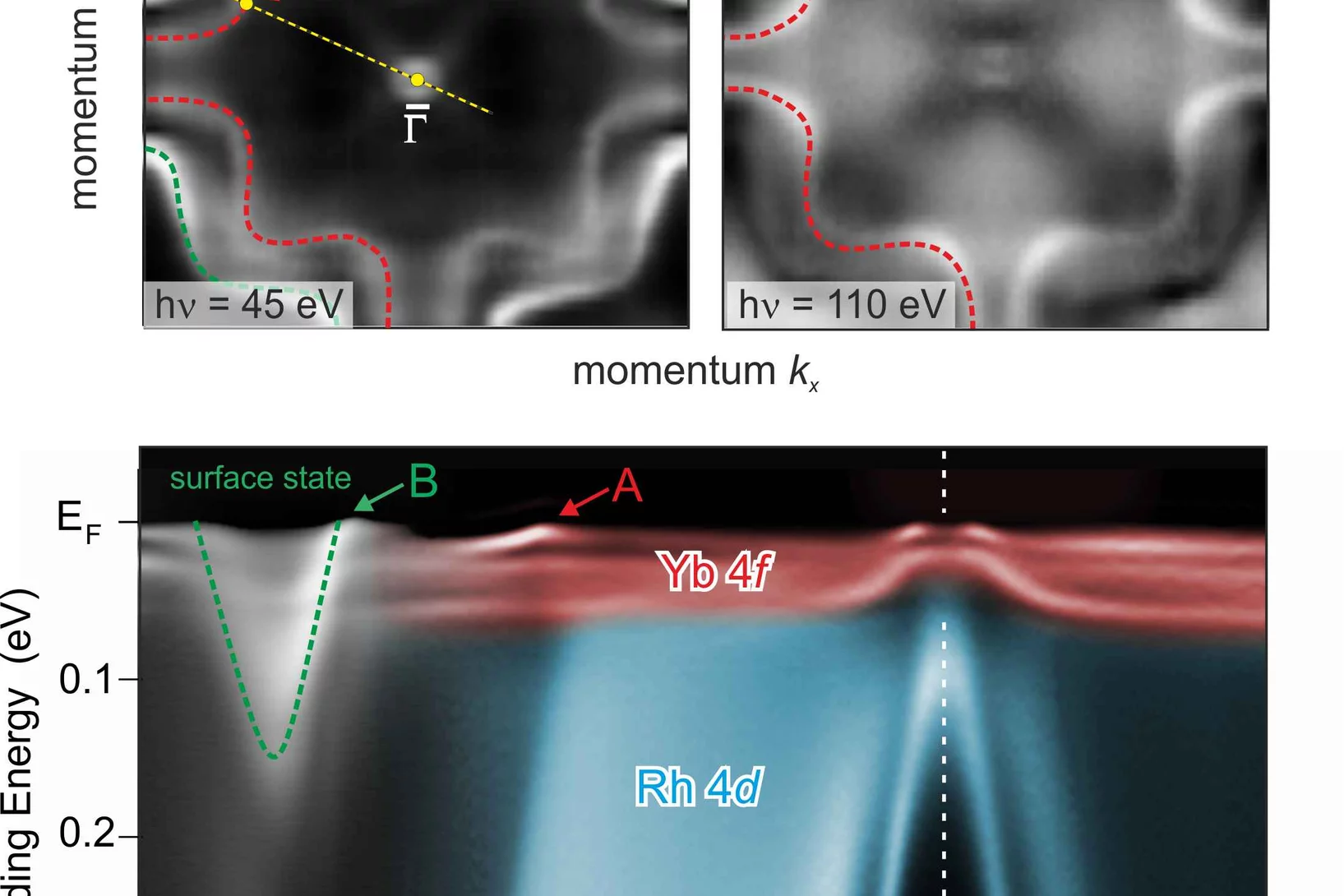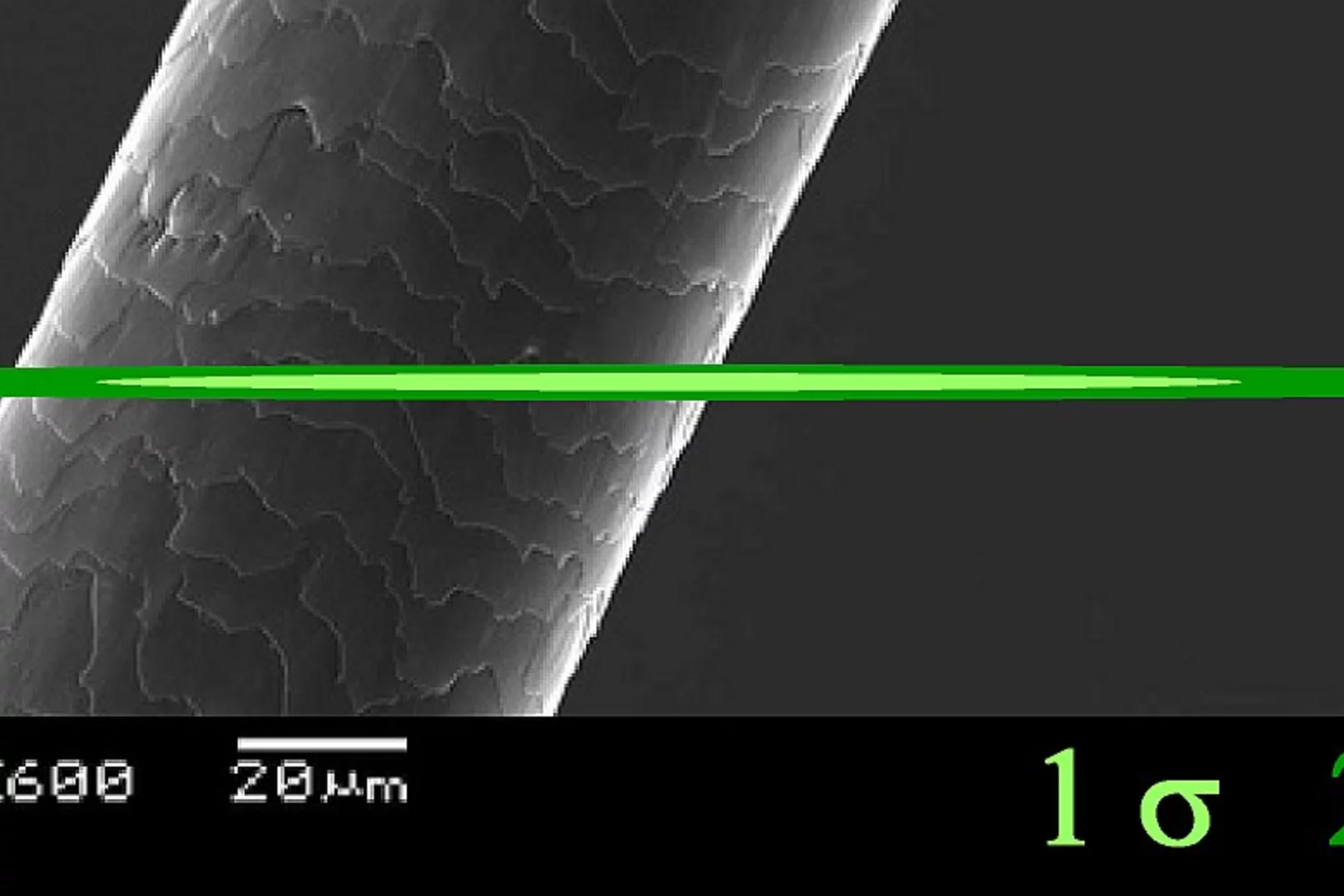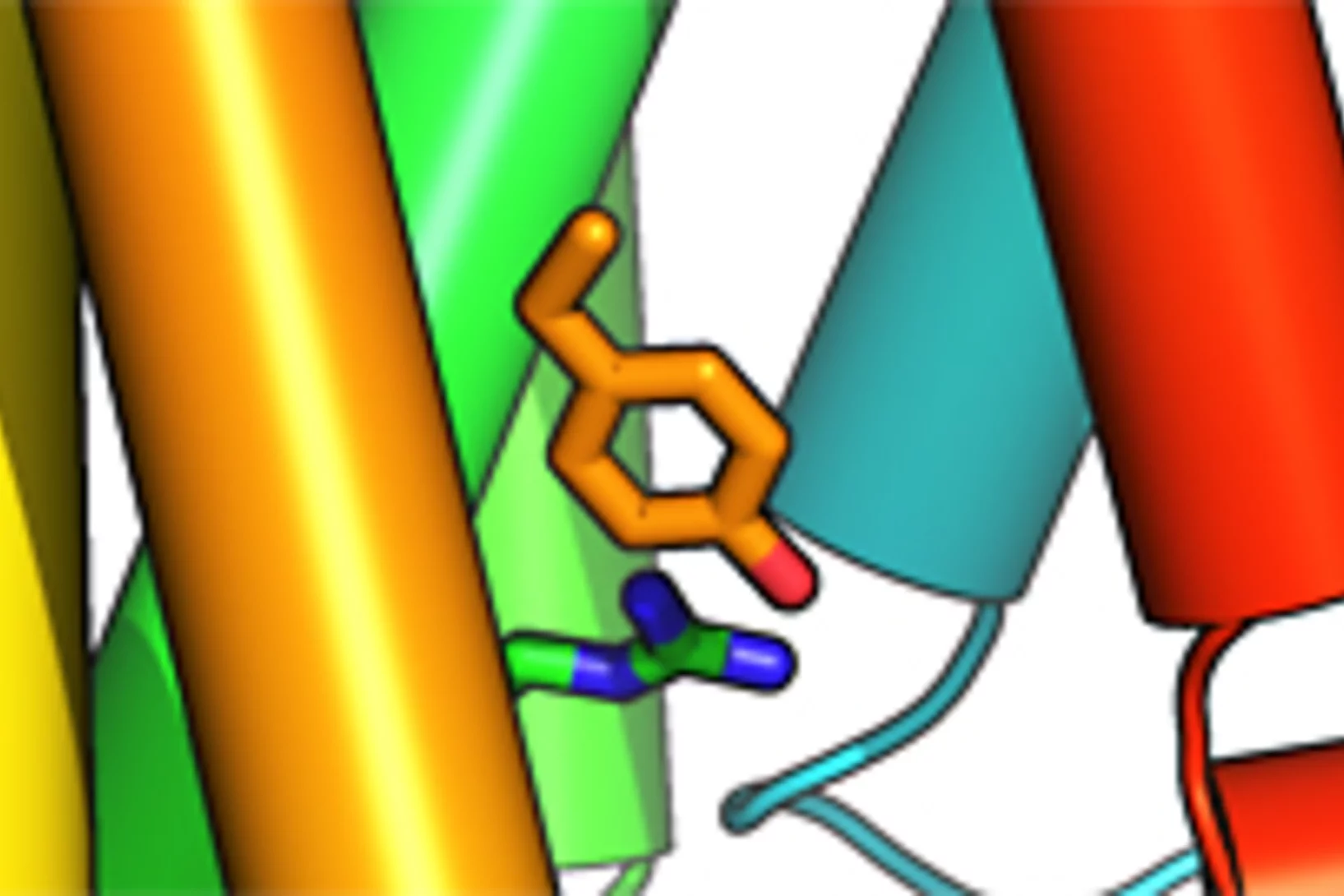Abandon de l’énergie nucléaire, développement de l’énergie solaire et éolienne, production d’énergie à partir de la biomasse, réduction de la consommation d’énergie. D’ici 2050, la Suisse doit atteindre la neutralité climatique. Un objectif ambitieux, rendu plus urgent que jamais par une situation géopolitique de plus en plus difficile. Comment faire pour mettre en place ces prochaines années un approvisionnement énergétique durable et résistant pour la Suisse? Comment les énergies renouvelables peuvent-elles être utilisées de manière optimale? Quelles sont les nouvelles technologies les plus prometteuses? Au PSI, des chercheurs s’efforcent de trouver des réponses à ces questions décisives.
Les plaques amyloïdes de l’Alzheimer en 3D
Des chercheurs ont réussi à générer des images tridimensionnelles détaillées de la distribution des plaques amyloïdes dans le cerveau de souris atteintes de la maladie d’Alzheimer. La nouvelle technique utilisée pour ces travaux de recherche a permis le développement d’une méthode d’analyse extrêmement puissante qui permettra de mieux comprendre la maladie. Les résultats étaient obtenus dans le cadre d’un projet commun de deux équipes de chercheurs à une de l’Institut Paul Scherrer (PSI) et de l’EPF Zurich, l’autre de l’École Polytechnique Fédérale de Lausanne (EPFL).
Flow modeling in gas diffusion layers of PEFCs at the micro- and mesoscale
he optimization of thermochemical and electrochemical conversion systems is of high importance for a sustainable energy future society. Of particular interest regarding the performance of polymer electrolyte fuel cells (PEFCs) is the study of the gas flow in the gas diffusion layers (GDL). More specifically, permeability and diffusivity measurements in a model PEFC under normal operating conditions are highly desirable. As laboratory-measurements of these quantities under such conditions are very demanding, an alternative is the use of computer-based simulations.
Three centuries of eastern european and Altai lead emissions recorded in a belukha ice core
Human activities have significantly altered atmospheric Pb concentrations and thus, its geochemical cycle, for thousands of years. Whereas historical Pb emissions from Western Europe, North America, and Asia are well documented, there is no equivalent data for Eastern Europe. Here, we present ice-core Pb concentrations for the period 1680à1995 from Belukha glacier in the Siberian Altai, assumed to be representative of emissions in Eastern Europe and the Altai.
Reconstruction du taux de plomb dans l'atmosphère de la Russie depuis 1680
Une équipe de chercheurs de l'Institut Paul Scherrer vient de reconstituer l'évolution des taux du plomb dans l'atmosphère de la Russie depuis l'année 1680. Les résultats de l'analyse montre une nette augmentation de la concentration du plomb dans l'atmosphère dés les années trente du 20ème siècle et une nette diminution à partir des années soixante-dix.
Tournant énergétique: voir le tout, tout en tenant compte des détails
Le tournant énergétique en tant que volonté politique est réalité, mais comment la Suisse va-t-elle adapter son approvisionnement actuel en énergie aux objectifs formulés pour l’année 2050? C’est justement sur les questions de mise en oeuvre, des options possibles et des défis à relever lors de la restructuration du paysage énergétique suisse que s’est penché le Congrès sur l’Énergie, organisé le 14 mai 2012 par l’Institut Paul Scherrer. Le sujet principal était la restructuration des réseaux électriques dans un environnement d’approvisionnement énergétique de plus en plus décentralisé.
Red-green-blue polymer light-emitting diode pixels printed by optimized laser-induced forward transfer
An optimized laser-induced forward transfer (LIFT) technique has been used to fabricate tri-color organic light-emitting diode (OLED) pixels. At reduced pressures, and with a defined donor-receiver gap, patterned depositions of polyfluorene-based OLED pixels have been achieved. OLED pixel functionality has been demonstrated and compared with devices made using conventional deposition techniques. In addition, improved functionality has been obtained by coating the cathode with an electron-injecting layer, a process not possible using conventional OLED fabrication techniques. The OLED pixels fabricated by LIFT reach efficiencies on the range of conventionally fabricated devices and even surpass them in the case of blue pixels.
Direct observation of the quantum critical point in heavy fermion CeRhSi3
In many heavy fermion materials the quantum critical point is masked by superconductivity and it can only be detected by use of a local probe. In the noncentrosymmetric heavy fermion CeRhSi3 the ground state at ambient pressure is antiferromagnetically ordered and superconductivity sets in above 12 kbar coexisting with antiferromagnetism. We have unraveled a magnetic quantum critical point hidden deep inside the superconducting state of CeRhSi3.
Three-Dimensional Spin Rotations in a Monolayer Electron System
In the emerging field of spintronics, the generation, injection, and in particular the control of highly spin polarized currents are main issues to be solved. Lifting of spin degeneracy by the spin-orbit interaction at surfaces, known as Rashba effect, represents a promising approach, since it generates two spin-polarized bands without the necessity of an external field. In our recent study, we realize such a system for a metallic surface layer on a semiconductor: Au/Ge(111).
Rétention d'iode radioactif en cas d'accident grave de centrale nucléaire
Les chercheurs de l'institut Paul Scherrer PSI ont développé un procédé efficace de filtrage de l’iode radioactif. Après la fusion du cur à la suite d'une avarie au sein d'une centrale nucléaire, ce filtre élimine à peu près totalement l’iode contenu dans l'air pollué par les substances radioactives avant qu'il ne soit rejeté dans l'environnement. Pour que la méthode puisse être mise en uvre partout dans le monde, PSI et CCI-Industries AG (Balterswil/TG) ont récemment signé un contrat de licence d'exploitation de ce procédé breveté du PSI.
Les physiciens observent la séparation d'un électron dans un corps solide
Les physiciens d'un groupe international de chercheurs, réunis au PSI, ont pu observer la séparation des propriétés fondamentales d'un électron. Deux nouvelles particules, formées lors de l’expérience, pouvaient dès lors se déplacer librement et indépendamment dans le matériau ayant servi à leur création, possédant chacune l'une des propriétés fondamentales de l'électron dont elles sont issues.
Physicists observe the splitting of an electron inside a solid
An electron has been observed to decay into two separate parts, each carrying a particular property of the electron: a spinon carrying its spin – the property making the electron behave as a tiny compass needle – and an orbiton carrying its orbital moment – which arises from the electron’s motion around the nucleus. These newly created particles, however, cannot leave the material in which they have been produced.
Ellipsoidal hybrid magnetic microgel particles with thermally tunable aspect ratios
We report on the synthesis and characterization of multiresponsive hybrid microgel particles. The particles consist of ellipsoidal silica-coated maghemite cores subsequently coated with thermoresponsive poly (N-isopropylacrylamide) (PNIPAM) shells. The PNIPAM shell enables the hybrid particle to alter its size and ratio of long to small axis with increasing temperature while the core morphology remains unchanged.
Essai de pompage haut débit au site du SwissFEL
Zur Kühlung des SwissFEL soll Grundwasser genutzt werden. Ein Grosspumpversuch soll nachweisen, dass durch die Wasserentnahme der Grundwasserspiegel nicht übermässig abgesenkt wird und dass insbesondere die Trinkwasserversorgung von Würenlingen, Döttingen und Klein-Döttingen nicht beeinträchtigt wird. Während des Versuchs werden im Juli 2012 zwei Wochen lang 50 Liter Grundwasser pro Sekunde abgepumpt und in die Aare geleitet. Gleichzeitig wird der Grundwasserspiegel an den verschiedenen Entnahmestellen beobachtet. Die Vorbereitungen für den Versuch beginnen im März 2012.Cette actualité n'existe qu'en allemand.
PSI-Feriencamp 2012
Suchen Sie für Ihr Kind ein spannendes Angebot während den Sommerferien? Möchten Sie in ihm die Neugier und Begeisterung für naturwissenschaftlich-technische Themen wecken? Die Berufsbildung und das Komitee für Chancengleichheit führt dieses Jahr zum achten Mal das PSI-Feriencamp durch!
Magnetisieren braucht mehr Zeit als Entmagnetisieren
Forscher am Paul Scherrer Institut finden heraus, wie lange der Aufbau von Magnetismus in einem Metall dauert und wie der Vorgang abläuft Wenn die Metalllegierung Eisen-Rhodium magnetisiert wird, dauert dieser Prozess deutlich länger als der gegenläufige Vorgang der Entmagnetisierung. Diese Erkenntnis haben Forscher des Paul Scherrer Instituts zusammen mit einem internationalen Forscherteam gewonnen. Die Erkenntnisse aus der Grundlagenforschung sind relevant für die Computerindustrie: Sie zeigen, welche Prozesse die Eigenschaften magnetischer Datenspeicherung begrenzen und wo es Potential für Verbesserung gibt.Cette actualité n'existe qu'en allemand.
Creating magnetism takes much longer than destroying it
Researchers at the Paul Scherrer Institute are finding out how long it takes to establish magnetism and how this happens.
Structural and magnetic dynamics of a first order phase transition
We use time-resolved x-ray diffraction and magneto-optical Kerr effect to study the laser-induced antiferromagnetic to ferromagnetic phase transition in FeRh. The structural response is given by the nucleation of independent ferromagnetic domains (t ~ 30 ps).
Directly coupled Ferromagnetism and Ferroelectricity in the Olivine Mn2GeO4
The olivine compound Mn2GeO4 is shown to feature both a ferroelectric polarization and a ferromagnetic magnetization that are directly coupled and point along the same direction. We show that a spin spiral generates ferroelectricity, and a canted commensurate order leads to weak ferromagnetism.
Wie der Körper Fremdes von Eigenem unterscheiden - wesentliche Struktur aufgeklärt
Ähnlich einem Schredder zerlegt das Immunoproteasom Eiweisse in kleine Bruchstücke, die dann an der Oberfläche der Zelle präsentiert werden. Werden diese Eiweissteile als körperfremd erkannt, vernichtet das Immunsystem die Zelle. Bei Autoimmunerkrankungen wie Rheuma ist dieser Prozess gestört. Helfen könnte da, das Immunoproteasom zu hemmen. Mit Hilfe von Messungen am Paul Scherrer Institut ist es nun erstmals gelungen, die Struktur des Immunoproteasoms aufzuklären und Angriffsstellen für neue Medikamente aufzuzeigen.Cette actualité n'existe qu'en anglais et allemand.
Coopération pour un accélérateur parfait
Plus de 10'000 pièces usinées à tous d'une précision d'un millième de millimètre à doivent être fabriqués grâce à la synergie entre l'Institut Paul Scherrer PSI et la société Oerlikon Mechatronics AG, Trübbach pour parfaire les cavités accélératrices du SwissFEL, le projet du laser aux rayons X du PSI. Pour l'accélérateur lineaire du SwissFEL, c'est la société Oerlikon Mechatronics qui réalisera les cellules en cuivre (de forme complexe et necessitant une très grande précision) dont la superposition en cavités permettra de produire la force électrique requise pour accélérer les électrons.
Mit Hitze Daten speichern
Ein internationales Forschungsteam hat einen neuen Weg aufgezeigt, um Daten auf magnetischen Medien zu speichern. Dabei verwenden die Forschenden kein externes Magnetfeld, sondern setzten stattdessen einen Hitzepuls ein. Diese Methode könnte die Speicherung von mehreren Tausend Gigabyte pro Sekunde erlauben. Das Verfahren wäre viele hundert mal schneller als Technologien, die in heutigen Festplatten genutzt werden und hat das Potenzial, deutlich weniger Energie zu verbrauchen. Mit dem Einsatz moderner lithografischer Verfahren und hochmoderner Röntgenmikrokopie haben Forschende des Paul Scherrer Instituts wesentlich zu dem Ergebnis beigetragen.Cette actualité n'existe qu'en anglais et allemand.
Kein Blick in die Kristallkugel
Das Paul Scherrer Institut wird in Zusammenarbeit mit dem Weltenergierat nachvollziehbare Modelle für zukünftige globale Energiesysteme entwickeln. In einem auf drei Jahre ausgelegten Projekt wollen PSI-Forscher um Stefan Hirschberg ein Modell entwickeln mit dem man Aussagen über zukünftige Energiesysteme machen kann. Das besondere daran ist, dass es sich um ein sogenanntes Open-Source-Modell handeln wird. D. h. Experten und andere Interessenten können einen Zugang zum Programm erhalten, sowie Informationen darüber, von genau welchen Annahmen die Forscher bei der Ausarbeitung ihres Modells ausgegangen sind. Das ist bei kommerziellen Anbietern von Prognosewerkzeugen nicht üblich.Cette actualité n'existe qu'en allemand.
Origin of the Large Polarization in Multiferroic YMnO3 Thin Films
Multiferroic materials have attracted much interest because of their ability to control magnetism by the application of an electric field. This ability is expected to reduce the power required by electronic devices and to increase their speed. However, the number of multiferroic materials discovered so far has been small, and ferromagnetism and ferroelectricity in the known materials are often much weaker than required for practical applications.
Cela fonctionne: un processus magnétique ultrarapide observé en temps direct grâce à un laser à rayon X
Une équipe scientifique sous la direction de chercheurs de l’Institut Paul Scherrer a pour la première fois pu suivre avec exactitude à l’aide du Laser à rayon X américain LCLS, les changements de structure magnétique d’un matériau. La variation de structure a été examinée au moyen d’un flash laser à impulsions courtes. Il a été ainsi montré que la structure commence à se modifier que 400 femtosecondes après le flash laser. Pour les chercheurs du PSI c’est un jalon de référence très important, puisque de telles recherches doivent être aussi un thème central pour le laser à rayon X SwissFEL prévu à l’Institut Paul Scherrer.
Liquids in narrow spaces
How does spatial confinement affect the microscopic structure of liquids?
This is a question which is receiving increasing attention from condensed matter physicists. Liquids are characterized by a short-ranged, so-called local structure, and it has been predicted theoretically about 25 years ago that confinement induces anisotropy in the local structure, and hence many properties, of liquids.
Femtosecond dynamics of an antiferromagnetic phase transition
We report on the ultrafast dynamics of magnetic order in a single crystal of CuO at a temperature of 207 K in response to strong optical excitation using femtosecond resonant x-ray diffraction. In this experiment performed at the LCLS X-ray free electron laser at Stanford a femtosecond laser pulse induces a sudden, nonequilibrium increase in magnetic disorder.
Fossile Vorläufer der ersten Tiere
Einzellige Organismen, die vor über einer halben Milliarde Jahre gelebt haben und deren Fossilien in China gefunden wurden, sind wohl die unmittelbaren Vorläufer der frühesten Tiere. Die amöbenartigen Einzeller haben sich in einer Weise in zwei, vier, acht usw. Zellen geteilt, wie es heute tierische (und menschliche) Embryonen tun. Die Forscher glauben, dass diese Organismen einem der ersten Schritte vom Einzeller zum Vielzeller in der Entwicklung richtiger Tiere entsprechen.Cette actualité n'existe qu'en allemand.
A close look at correlated electrons in heavy-fermion metal through ARPES
Showing astonishing properties like magnetism, superconductivity, Kondo and heavy-fermion (HF) behavior, rare-earth intermetallic compounds have been at the forefront of modern solid state physics for many years. Most of these properties are related to a delicate interplay between the partially filled 4f-shell and conduction electrons.
Vertical Emittance of the SLS Storage Ring
On the 6th of December 2011 the vertical emittance of the SLS storage ring could be reduced to a world record low value of 1pm rad. The vertical beam size in the short straight sections of the SLS is then only 3 micron (rms). This was achieved through vertical re-alignment of the magnet girders with 400mA stored beam and fast orbit feedback running, as well as through application of several different methods of coupling suppression using 36 skew quadrupoles. High resolution profile monitor utilizing vertically polarized component of synchrotron radiation allowed precise determination of the beam size.
Wenn die Datenleitung in die Zelle versagt
Lebende Zellen empfangen dauernd Informationen von aussen, die über Rezeptoren in das Zellinnere weitergeleitet werden. Genetisch bedingte Fehler in solchen Rezeptoren sind der Grund für zahlreiche Erbkrankheiten darunter verschiedene hormonelle Funktionsstörungen oder Nachtblindheit. Forschern des Paul Scherrer Instituts ist es nun erstmals gelungen, die exakte Struktur eines solchen fehlerhaften Rezeptors aufzuklären.Cette actualité n'existe qu'en allemand.


